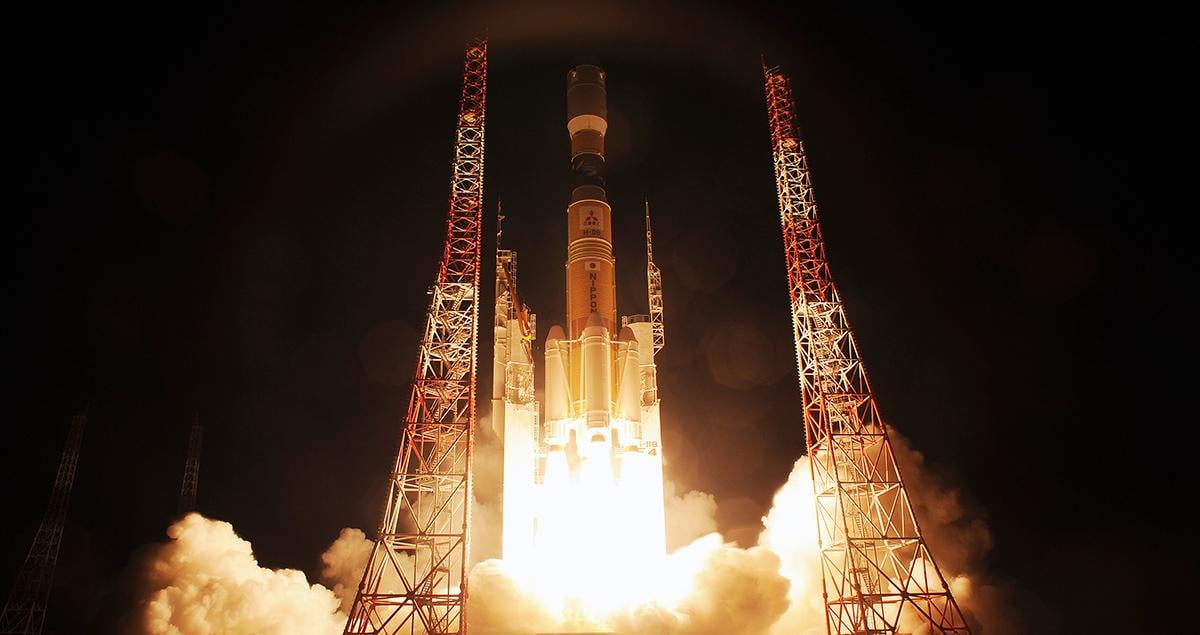How private firms are transforming the space business

Since 2003, Mitsubishi Heavy Industries (MHI) has worked closely with the Japanese government and Japan Aerospace Exploration Agency (JAXA) to develop its acclaimed H-IIB launch vehicle.
Conducting operations from Japan’s Tanegashima Space Center, the H-IIB maintains a 100% launch success rate.
Essential supplies
Since its successful maiden voyage in 2009, the H-IIB launch vehicle has formed part of a lifeline for astronauts on the International Space Station. They rely on the Japanese program for vital supplies. The heavy-lift launch vehicle will embark on its seventh mission in September 2018. It has the capacity to transport Japanese H-II transfer vehicles (HTV) into low Earth orbit as part of the mission to take supplies to the ISS. Once in orbit, HTV 7 - nicknamed “Kounotori” which means “white stork” - will carry essential supplies to the occupants of the space station, as well as removing accumulated waste materials.
Kounotori 7, which will burn-up on re-entry, represents the most cost-effective transfer vehicle that MHI has so far developed.
A record of success
To date, the H-IIA and H-IIB rockets have recorded 39 successful launches since 2005, with a 97.8% launch success rate. The most recent rocket builds on the design and performance successes of earlier H-II and H-IIA flights, with extensive modifications to reduce development and manufacturing costs and improve reliability. The H-IIB design has an increased maximum payload of 8 tons to Geostationary Transfer Orbit, compared to the H-IIA’s capacity of 4 – 6 tons. This allows the enhanced launcher to more accurately deploy its heavy HTV passenger to Low Earth Orbit up to 16.5 tons.
To propel the HTV into orbit, the launch vehicle’s core stage is powered by two liquid-fuelled engines, with four solid rocket boosters. The upper stage is essentially a mini version of the core section. Following separation, the burn capabilities allow the rocket to position its cargo in a preliminary Low Earth Orbit and refine its trajectory.
Overcoming barriers
Sending vehicles into space was once the reserve of a select few governments, but increasingly the sector’s commercial benefits are becoming accessible to progressive private companies that possess the technical expertise and experience to compete. Advances in technology have reduced the complexity of parts and equipment and dramatically lowered costs, removing two of the main barriers to entry into the sector. As satellite technology and GPS positioning become increasingly integrated into everyday life, there are more opportunities for commercial companies to offer space-related services. In addition, the availability of smaller and more affordable satellites will boost demand for launch services.
MHI, for example, has been providing the Japanese government and commercial clients with increasingly competitive satellite launch services since 2007 and 2012, respectively, and continues to develop its launch vehicle capabilities to reduce costs and increase reliability. Development of the next generation launch vehicle, H3, will provide an increased launch capacity of 7 tons to Geostationary Transfer Orbit, at reduced costs. As a leader in Asia’s emerging commercial space sector, MHI is at the forefront of the drive to boost Japan’s ever-expanding capabilities.





